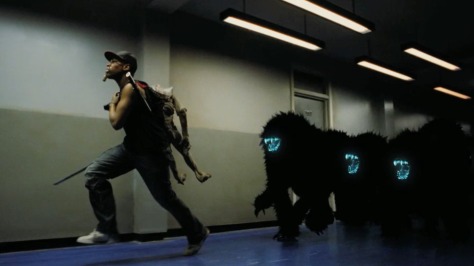
Attack the Block was another one of those destined-for-cult-status movies that was championed by the genre-focused movie websites I read back in the late aughts and early 2010s, and it’s not difficult to understand why. At its heart, this is a throwback movie to older creature features and to the youth-centric films of the 1980s, with a fannish tint to its writing that is reflected in the references in the dialogue and the love of Big, Cool Moments. Writer-director Joe Cornish already had a following from his radio and television comedy work, and was able to parlay his association with Edgar Wright’s comedy-pastiche crew (Wright is an Executive Producer on this with his frequent collaborators Nira Park as Producer and Nick Frost in the cast) to get his film off the ground, and to some extent the exuberant aficionado tone of Wright’s work is evident here even if it’s not as much of a direct homage as his films often are. While this movie didn’t necessarily make a huge splash back in 2011, its favour among an influential crowd almost certainly led its two leads, John Boyega and Jodie Whitaker, to be cast as the new faces of two different long-running franchises, something that both might feel a tinge of regret about.
So, yes, this is exactly the sort of thing that Sci-Fi and horror nerds flock toward, an attempt to capture a bit of nostalgic spirit in its kids-vs-monsters set-up, but it’s also an intelligent and novel twist on that idea that goes places those older movies did not. The straightforward kind of monster action utilized by Cornish becomes a frame in which to place a cast of well-defined, lower class youths, the kind whose lives are not simply left out of fantasy films, but are regularly dehumanized into faceless, hoodie-wearing creatures themselves by people far removed from their poverty-stricken living conditions. Like many of the best monster movies, this is one about taking something very specific and very real and letting the fictional aberrations draw out the reality of it.
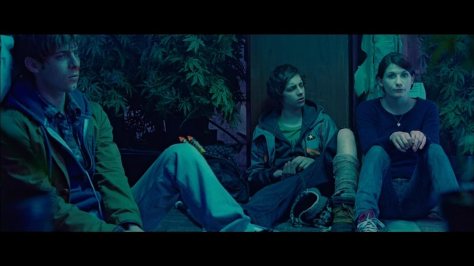
This is an alien invasion story that takes place in a part of a city that feels entirely cut off from the rest through pure indifference, and where authority figures are of absolutely no help. Set on Guy Fawkes night, where hooligans are constantly setting off fireworks and causing minor havoc, there is plenty of opportunity for the police to ignore what’s going on in the neighbourhood surrounding Wyndham Tower (yes, a reference to the author of Day of the Triffids, and not the only major British Sci-Fi figure to be nodded to through street and building names.) That is, except for the mugging of a recently moved-in denizen of the block, Whitaker’s Samantha—they take their time getting over there, but they offer to take her cruising around the street with them to look for the youths who robbed her at knifepoint.
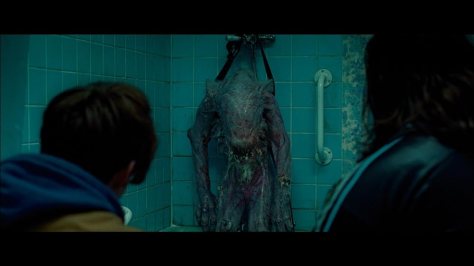
In a bold move, those youths are, in fact, our protagonists, five other Wyndham residents led by the emotionally-restrained Moses (Boyega), and whose numbers include Pest (Alex Esmail), Dennis (Fran Drameh), Jerome (Leeon Jones), and Biggz (Simon Howard.) That opening is ultimately a set-up to have the gang and the person they robbed be forced to work together when suddenly faced with an incursion of neon-fanged alien monsters, but the situation is still treated with a frank reality. This nightmare scenario for the bubble-living suburban class is played out just as their fear mongering tabloids say, and Cornish does not soften it or rely on cop-out sympathies—there are barely even any apologies when the group comes together and are forced to reckon with their actions. These five did what they did for their own reasons, and regret is something that comes by only gradually. Moses in particular remains a mostly practical and even intimidating figure for much of the film, using the latter to get things moving along when the monster situation starts—it’s through the uncovering of his loyalties and insecurities where we begin to see the complexities of his character.
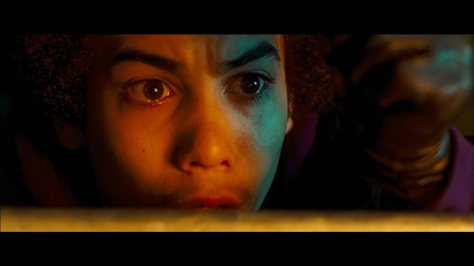
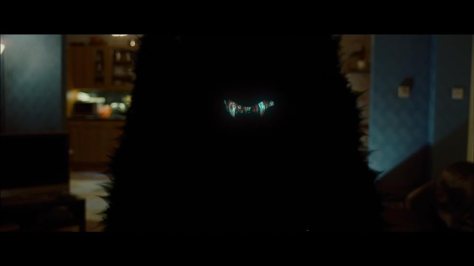
There’s an effortless quality to the character writing and acting in this movie, where we can immediately grasp the interrelationships between the five friends just from the way they talk to each other and to the other people who live in Wyndham Towers, without getting too much into explanation and backstory. For the most part, the only information we get about the home life of the kids other than Moses comes from seconds-long scenes where they rush into their flats to gather weaponry (which they tellingly have handily stashed away for just the occasion), brief conversations with mostly off-screen parents and the unremarkable appearance of their homes giving us whatever colour we need to get a feel for them. You understand that the most important dynamics for them is not necessarily with family, but with each other, and with the adult criminals with whom they either interact with frequently, as with Nick Frost’s weed-selling Ron, or who they alternately aspire to and fear, such as the domineering gang leader Hi-Hatz (Jumayn Hunter.) For them, the ecosystem of their block is the only thing they have any fondness for—the closest most of them come to apologizing to Samantha is saying they wouldn’t have jumped her if they knew she was from the block, a notion that she continues to argue with—giving them community and even goals that the rest of London does not. The appearance of the aliens, then, does not simply provide a menace to conquer, but an invasive species specifically threatening that ecosystem—whereas another invasive species, the confused pot smoking middle class bystander Brewis (Luke Treadaway), is more of an annoyance.
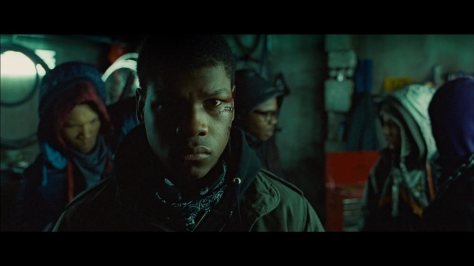
On a purely visual level, the pack of extraterrestrial beasts in this movie are some of the most unique-looking monsters in modern cinema, a simple concept rendered through a combination of practical effects and some CGI. The pure blackness of their furry, eyeless bodies smother the narrow hallways and cramped apartments of the block as their hordes infinitely grow, with only those neon fangs giving away their position—their purely stylized aesthetic makes them even more otherworldly than a more standard fleshy monstrosity. The throwback nature of the movie leads these beasts—usually jokingly referred as gorilla-wolves (or as Pest tells one of his friends over the phone, like something from Gears of War)—to be portrayed as monsters in the purest sense, snarling animals with no motivation other than pure biology and a tendency to tear through whatever is in their vicinity. There is no room for humanizing or sympathizing with these aliens, although the movie does at least give them a logical driving force—they are a pack of males pursuing the smaller, hairless female that Moses discovers and kills in a tool shed at the beginning of the movie, the traces its pheromones allowing them to find Moses specifically wherever he hides. Strangely enough, the mating pair concept was also found in recent site subject Grabbers, which released just a year later. I guess sexual dimorphism was a big trend among monster movie writers in the early 2010s.
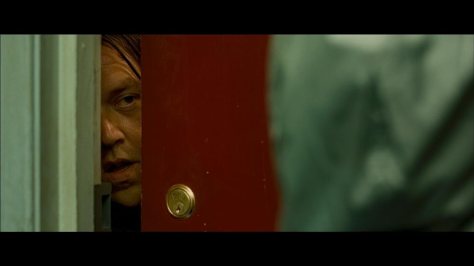
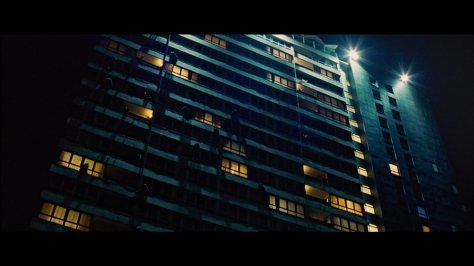
The details about the aliens’ biology ends up providing a major turn for Moses as a character. For most of the plot, the five friends are driven by a recognizable teenage recklessness and bravado, attempting to use their small scale violence to broadcast their dominant positions on the block—Moses tracking down and killing the first alien was an adrenaline rush ego boost. Eventually, he comes to realize that his actions have inadvertently brought the rest of the monsters upon them, and the deaths of multiple people, including some of his own friends, were ultimately because of his brash need to demonstrate his own toughness. Given his existing status as a member of the social pariah class—poor POC youths in rundown neighbourhoods that other people avoid—this simply further convinces him of how he brings misfortune on others around him just by existing (crossing Hi-Hatz and turning him into another ruthless killer on their trail is another one of those situations.) In these moments, Boyega shows Moses’ tough guy facade crack, and the basic tragedy of his life is unravelled further when Samantha enters his flat, sees the still very childish bedroom, and realizes that he is only fifteen, far too young to be bearing the sense of guilt and responsibility that he has, a product of a seemingly broken home life. This makes his decision to take on maximum risk to do right by everyone else emotionally complex, something beyond an expected big hero moment, although the slow-mo stylishness of that scene certainly plays it that way.
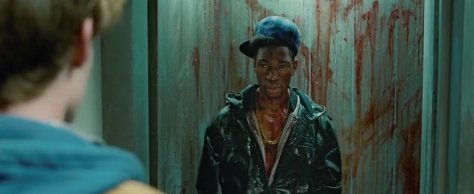
While comedic in parts—the constant stream of slang-ridden dialogue, with pop culture references sprinkled in, retains a grounded feeling that provides an amusing contrast to the Sci-Fi horror scenario—this is a movie that is not afraid to be brutal, either in its carefully-curated violence or in the way it portrays social stratification. In a move that differentiates it from the far less realistic kid adventure stories it riffs on, the fantasy of kids using everyday tools and homemade weapons to fight off monsters does not often lead to triumphant results. Those Big, Cool Moments that I mentioned in the first paragraph are here, but the image of someone riding on a scooter wielding a replica katana is regularly undercut when the protagonists are as encumbered by their equipment as they are empowered by it, “fights” usually shown to be desperate scrambles for survival. When the aliens first appear, it seems to be an excuse for the movie to partake in “fun” violence, but as the situation gets bloodier, more chaotic, and more overwhelming, the “fun” of this power fantasy is greatly diminished—especially with the knowledge that when the outside world decides to intervene, it won’t necessarily be to the protagonists’ benefit.
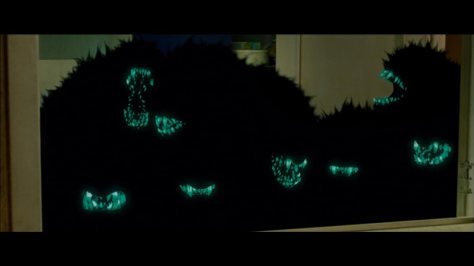
Given the kind of environment the movie portrays, it’s not surprising that the police only real begin to intercede in the mayhem near the very end, and as the characters themselves make it clear with their own reactions, the heavily armoured and unsympathetic authorities are just as frightening as the aliens (they even emerge from clouds of smoke like monsters.) Having repelled the infestation entirely on their own, Moses and his remaining friends are taken into custody as the film ends, the blood and gore on the streets and in the tower apparently not being outlandish enough for the police to not immediately blame them for all of it (sadly, not an unrealistic scenario.) This potentially bleak conclusion is tempered by both Samantha coming to their defence, and the entire block chanting Moses’ name as he sits in the back of a police van, having earned the respect he desired through his selfless actions. Rising above and becoming something more than a statistic is the moment of triumph here, more than running around murdering monsters ever could be.
